Configuring $mdoc$
There is a number of elements in the tool that influence the look-and-feel and the overall experience of the generated documentation website. Each of those elements has an out-of-the-box value which means that if you don't configure the elements, the defaults are used.
Normally, the configuration that spans across several assets or the whole website is provided by the means of a configuration asset. Asset-specific configuration is always stored within an asset.
For more information about different asset types see XXXXXXXXXX.
Depending on the element you want to configure, you will change a different file.
| Website Element | Where to Configure |
|---|---|
| main landing page text | configuration asset/resources/conf/greeting.md |
| top navigation | configuration asset/resources/mdoc-doc-metadata.yml |
| entry points | configuration asset/resources/mdoc-doc-metadata.yml |
| featured assets | configuration asset/resources/mdoc-doc-metadata.yml |
| available tags | configuration asset/resources/mdoc-doc-metadata.yml |
| asset display title | asset/mdoc-asset-metadata.yml |
| asset description | asset/mdoc-asset-metadata.yml |
| folder display title | asset/folder/mdoc-folder-metadata.yml |
| side navigation menu order | asset/folder/mdoc-folder-metadata.yml |
On this page
Configurable Elements
You can configure the behavior of the following elements:
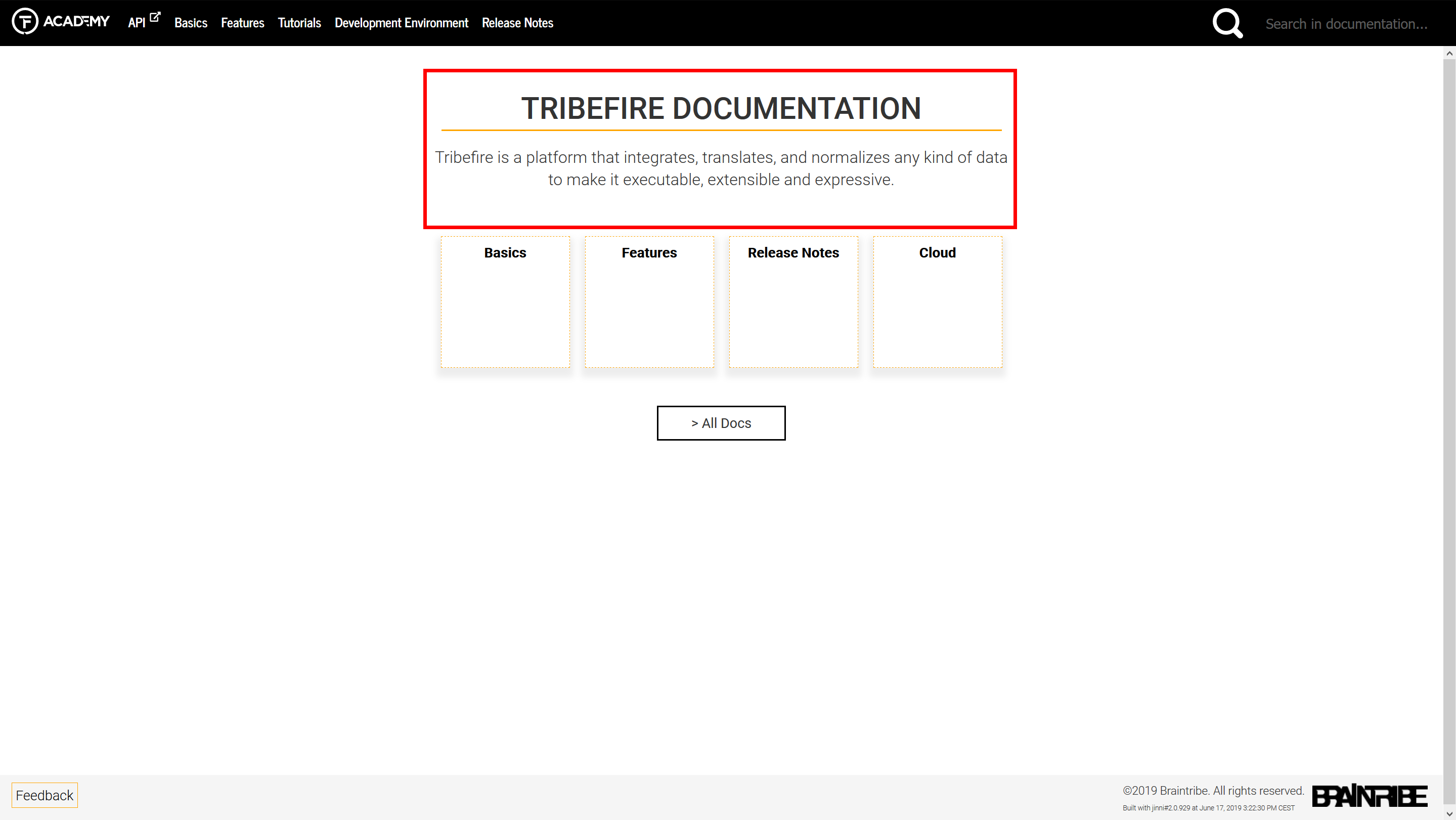
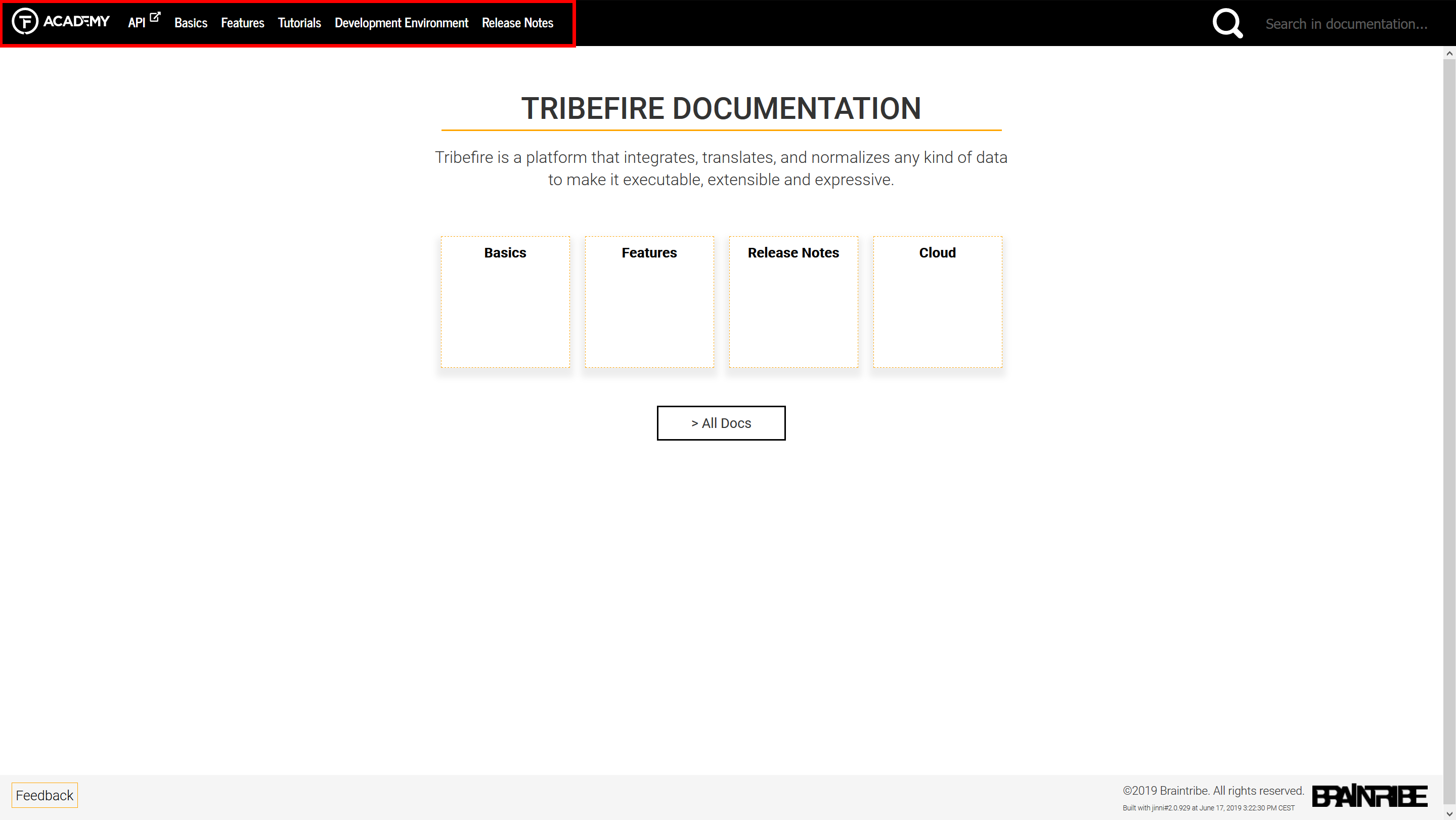
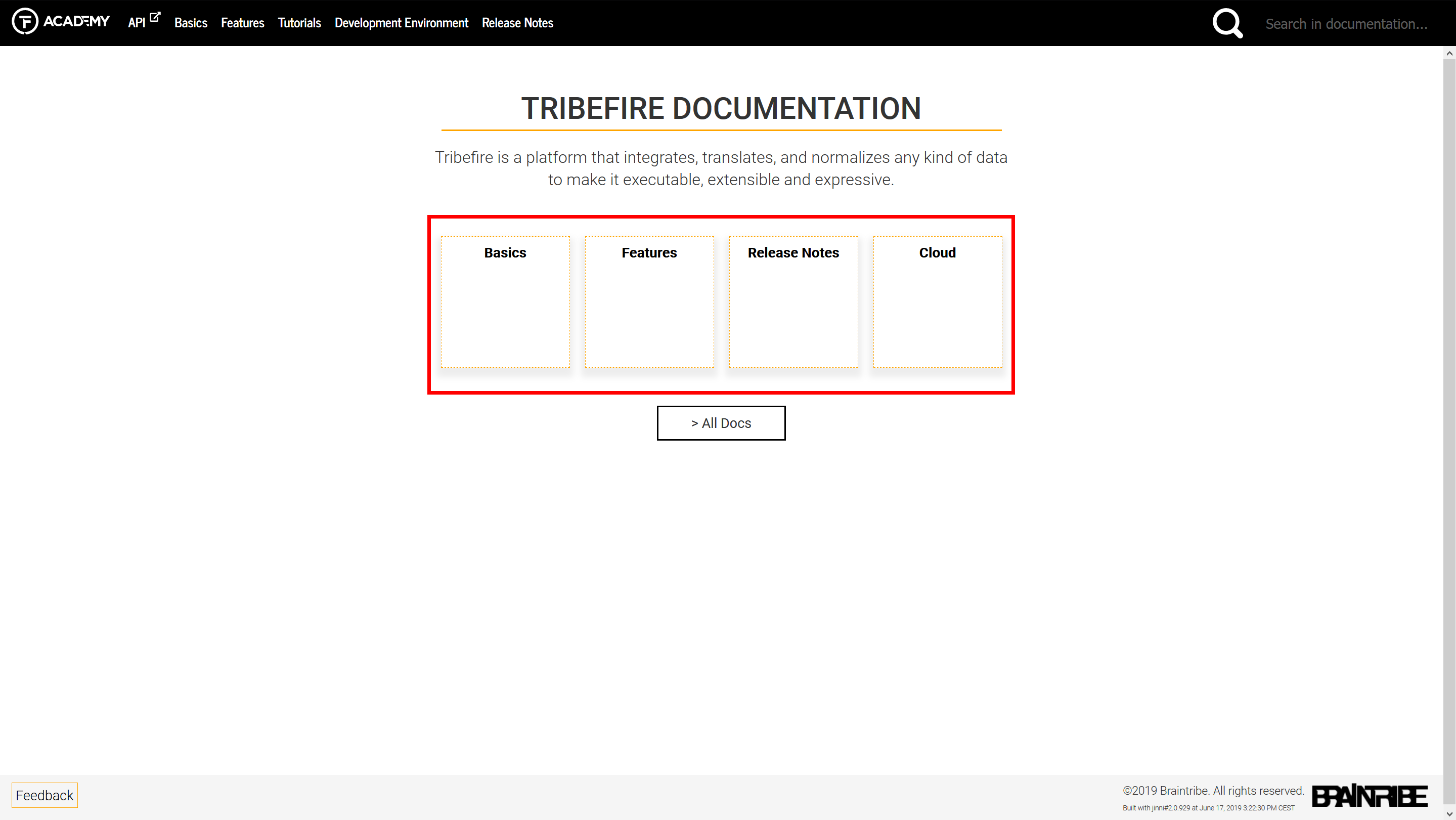

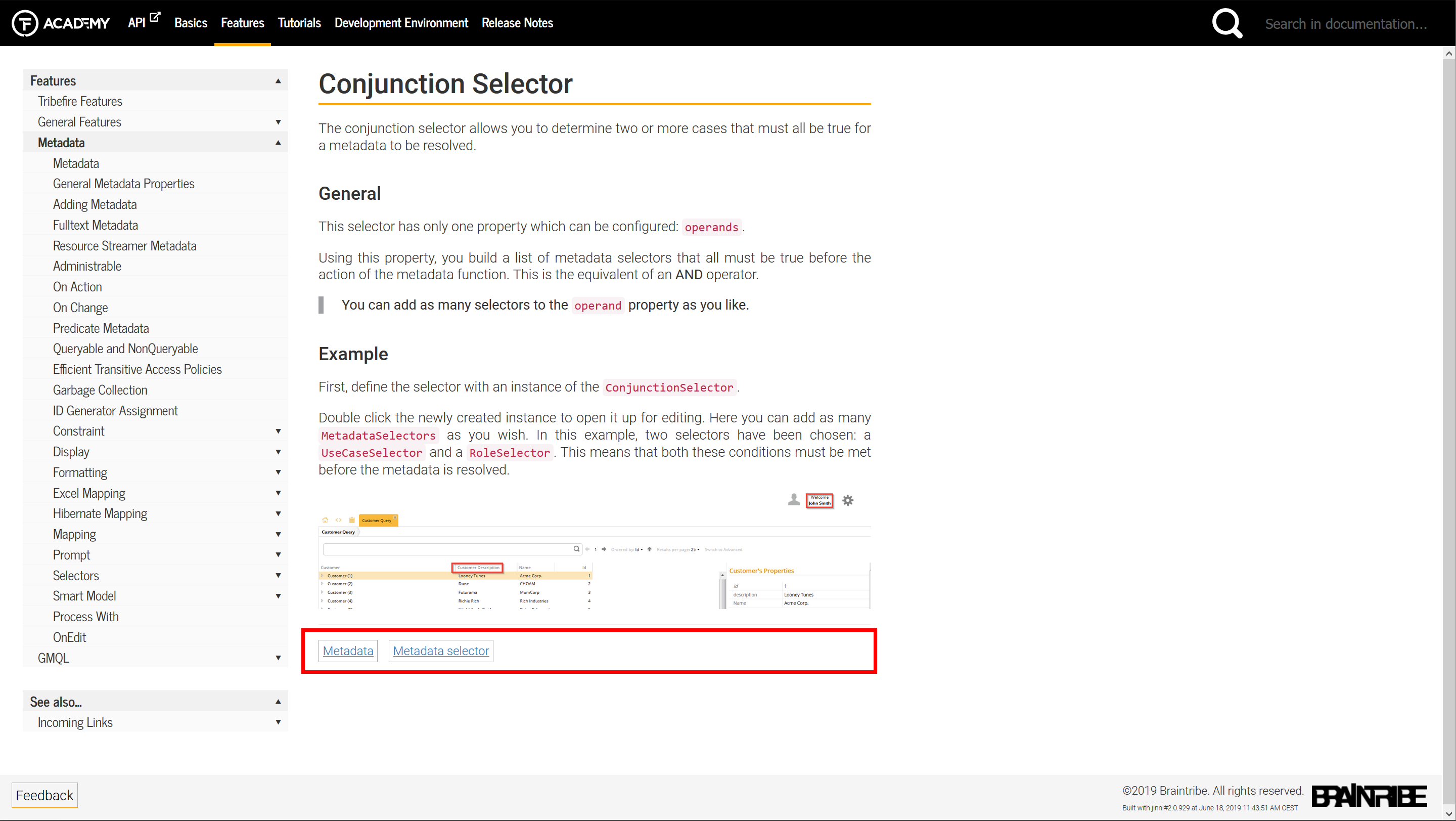
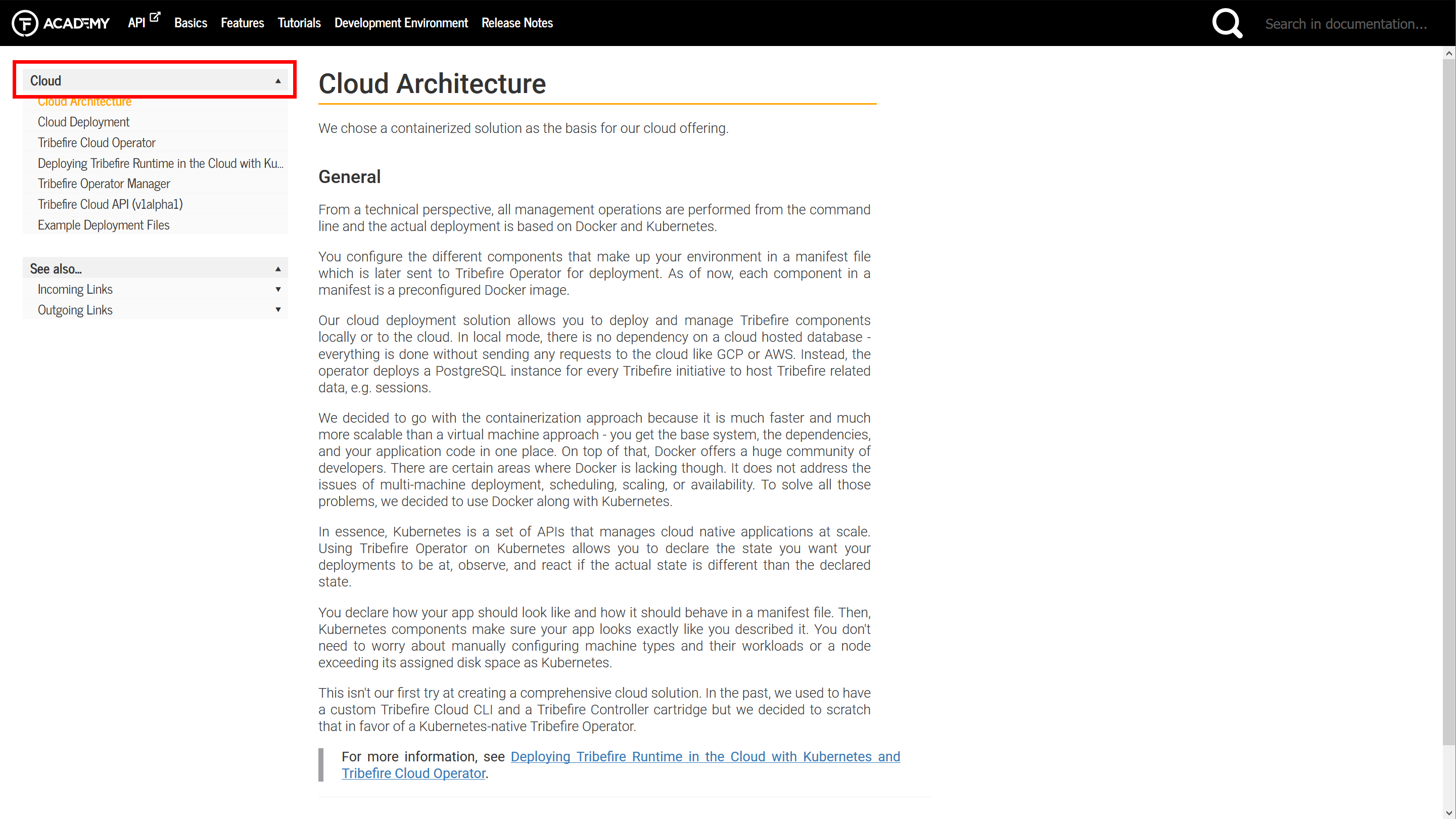
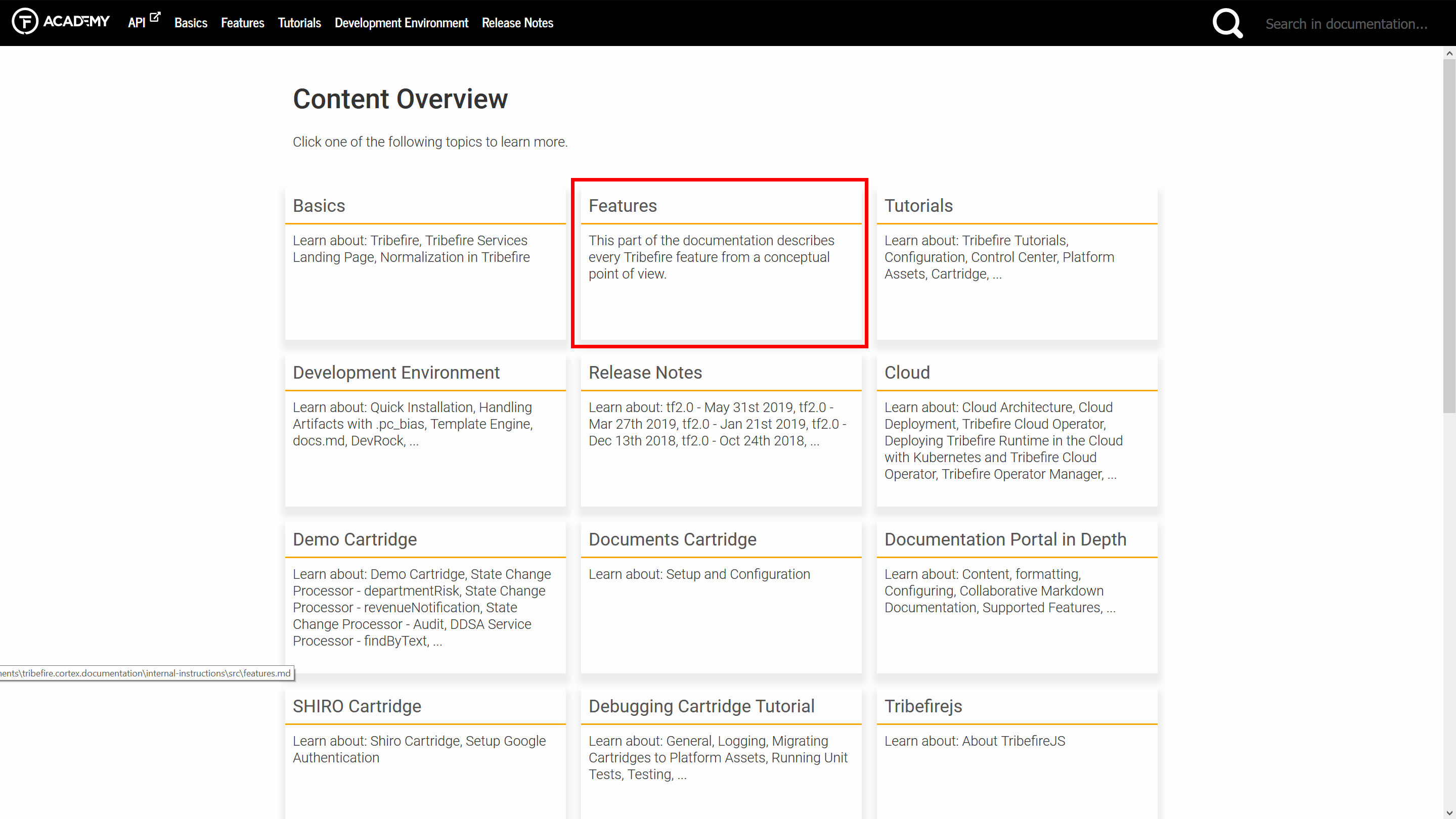
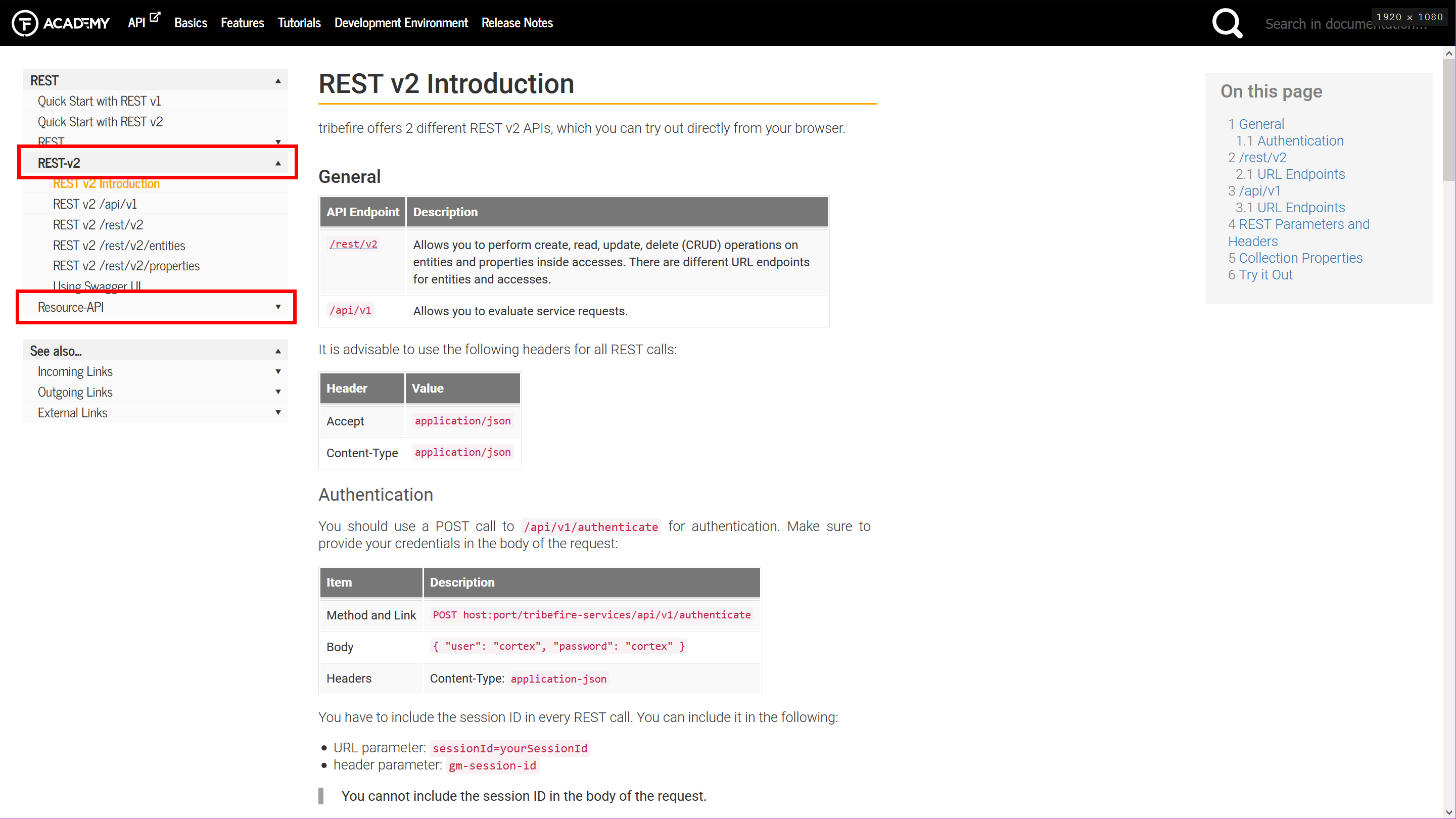
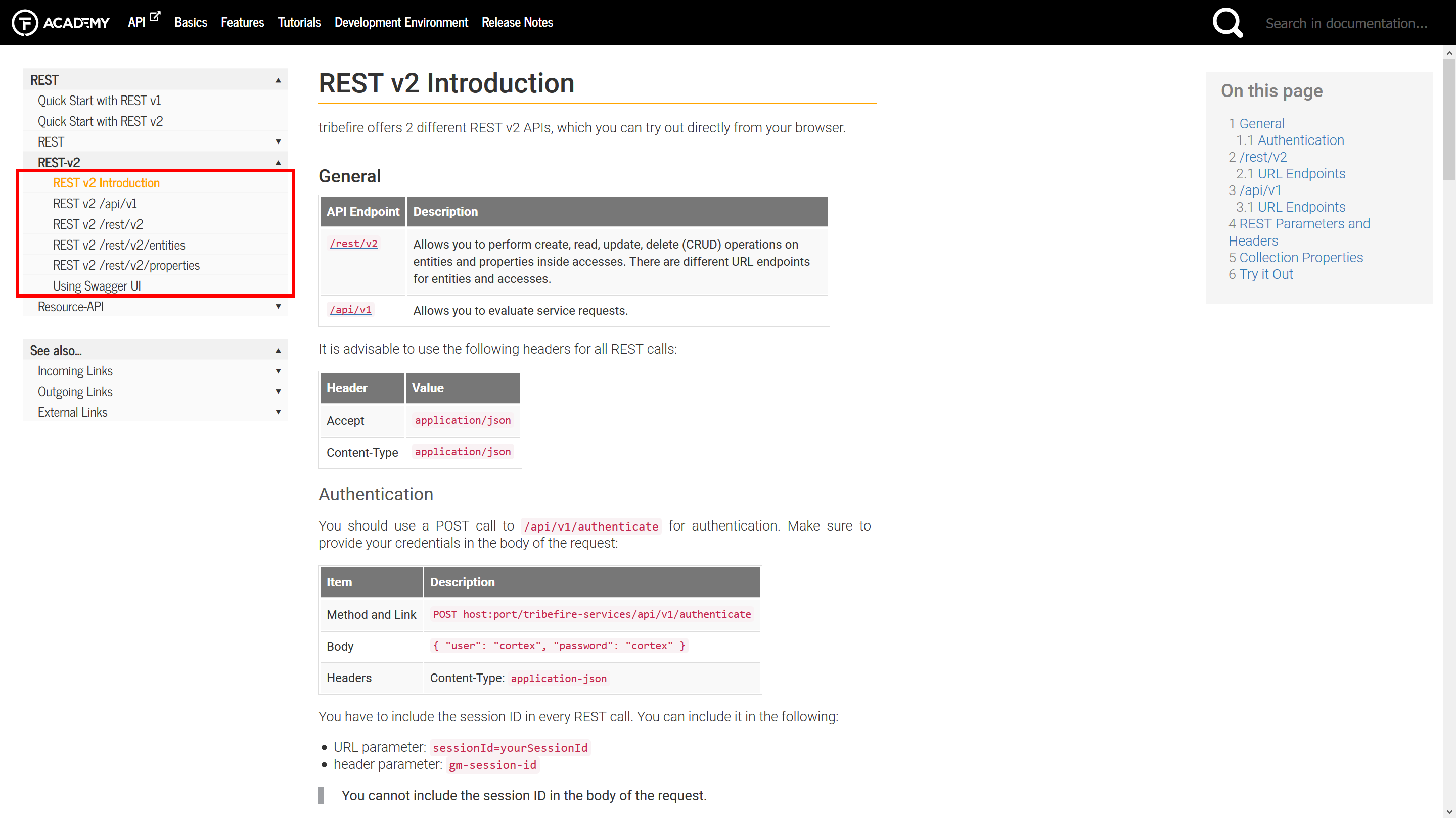
Main Landing Page Text
The main landing page text is the first thing the visitor of your portal sees and is configured in the greeting.md file in the configuration asset.
The configuration asset/resources/conf/greeting.md file is a simple Markdown document and supports all Markdown features. The snippet below is the source of what is visible in the screenshot.
# TRIBEFIRE DOCUMENTATION
Tribefire is a platform that integrates, translates, and normalizes any kind of data to make it executable, extensible and expressive.
Top Navigation
The top navigation is a list of assets that are always displayed at the top of a given page. Because those assets are always visible, you might want to take extra care when deciding which assets to include in the top navigation.
The assets visible in top navigation are configured in the /resources/mdoc-doc-metadata.yml file of the configuration asset. You provide the assets as items in the assets array inside the file. Each item must conform to the following syntax: groupId:assetId, for example: com.company.documentation:tutorials-documentation. Moreover, each item must be enclosed within double-quotes (""). The snippet below is the source of what is visible in the screenshot:
---
!com.braintribe.doc.meta.CustomDocMetaData
assets:
"tribefire.cortex.documentation:tribefire-home-doc":
"tribefire.cortex.documentation:concepts-doc":
"tribefire.cortex.documentation:tutorials-doc":
"tribefire.cortex.documentation:development-environment-doc":
"tribefire.cortex.documentation:release-notes-doc":
Entry Points
TBD
Featured Assets
TBD
Available Tags
$mdoc$ supports adding tags to assets and individual pages. Tags are available in the following places:
- The All Docs page shows all tags used in the documentation portal.
- Individual pages display their tags at the bottom.
- When you select a tag, a search query
Docs tagged "tag"returns all pages where the tag is used. Note that other tags used by the page are also displayed in the description for your convenience.
Essentially, there are two steps to configuring a tag:
- Adding the tag to the configuration asset so that it is available for all other assets to use
- Adding the tag to the actual page/folder in an asset
Before you can use a tag on a given page, you must add it to the /resources/mdoc-doc-metadata.yml file of the configuration asset. Each tag has the following properties:
| Property | Description |
|---|---|
tagId | Mandatory property used to refer to this tag from documents and folders from other assets. |
displayTitle | Optional property used to change the title of the tag. By default, the display title is exactly the same as the tagId, but there are cases where you want the two to be different. |
description | Optional property used to provide a description of a given tag. The description is displayed on the All Tags page. |
The snippet below is the /resources/mdoc-doc-metadata.yml file of what is visible in the screenshot:
tags:
- tagId: rest
displayTitle: REST
- tagId: metadata
displayTitle: Metadata
- tagId: selector
displayTitle: Metadata selector
- tagId: template
displayTitle: Template
description: Templates are used to create template-based actions, such as customized queries and service requests.
You may notice that the
templatetag is not visible in the screenshot. This is because there are no documents/folders tagged with this tag.
Once you have introduced your tag to the configuration asset, you can simply add tags to folders and pages in the mdoc-folder-metadata.yml file of an asset:
quick_start_rest.md:
tags:
- rest
REST-v2:
tags:
- rest
As a result , rest tag is added to the quick_start_rest.md file, and to all files in REST-v2 folder.
Asset Display Title
The title of an asset is used to identify the contents of the asset and is used in the side navigation, top navigation and on the All Assets page.
You can configure the display title of an asset in the src/mdoc-asset-metadata.yml file. The snippet below is what is visible in the screenshot:
!com.braintribe.doc.meta.CustomAssetMetaData
displayTitle: "Cloud"
Asset Description
The asset description is used to provide a short description of what is inside a given asset. The description is visible on the All Assets page.
You can configure the description of an asset in the src/mdoc-asset-metadata.yml file. The snippet below is what is visible in the screenshot:
---
!com.braintribe.doc.meta.CustomAssetMetaData
displayTitle: "Features"
shortDescription: "This part of the documentation describes every Tribefire feature from a conceptual point of view."
If you do not provide a description, the first five documents in the asset are listed.